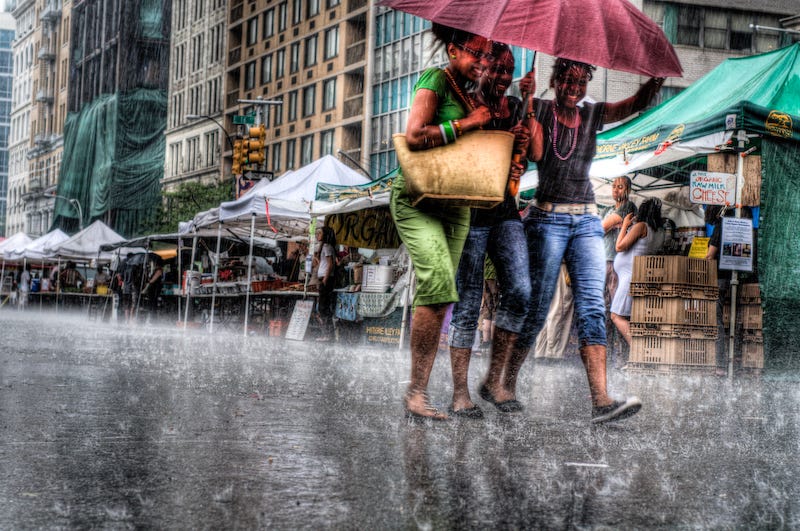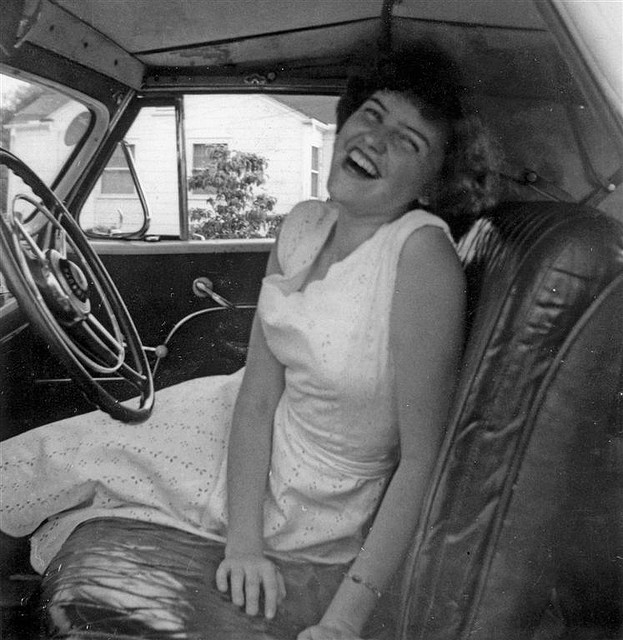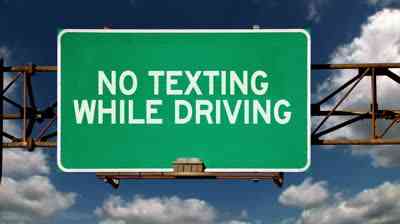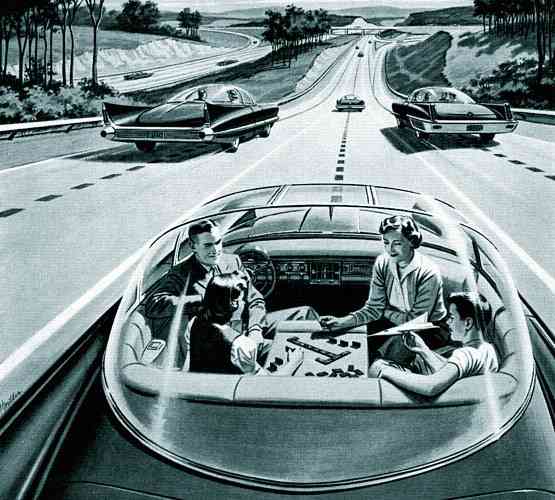Earlier this week, Anil Dash wrote a smart piece unpacking the concept of “public.” He opens with some provocative questions about how we imagine the public, highlighting how new technologies that make heightened visibility possible. For example,
Someone could make off with all your garbage that’s put out on the street, and carefully record how many used condoms or pregnancy tests or discarded pill bottles are in the trash, and then post that information up on the web along with your name and your address. There’s probably no law against it in your area. Trash on the curb is public.
The acts that he describes are at odds with — or at least complicate — our collective sense of what’s appropriate. What’s at stake is not about the law, but about our idea of the society we live in. This leads him to argue that the notion of public is not easy to define. “Public is not just what can be viewed by others, but a fragile set of social conventions about what behaviors are acceptable and appropriate.” He then goes on to talk about the vested interests in undermining people’s conception of public and expanding the collective standards of what is in.
To get there, he pushes back at the dichotomy between “public” and “private,” suggesting that we should think of these as a spectrum. I’d like to push back even further to suggest that our notion of privacy, when conceptualized in relationship to “public,” does a disservice to both concepts. The notion of private is also a social convention, but privacy isn’t a state of a particular set of data. It’s a practice and a process, an idealized state of being, to be actively negotiated in an effort to have agency. Once we realize this, we can reimagine how to negotiate privacy in a networked world. So let me unpack this for a moment.
 Imagine that you’re sitting in a park with your best friend talking about your relationship troubles. You may be in a public space (in both senses of that term), but you see your conversation as private because of the social context, not the physical setting. Most likely, what you’ve thought through is whether or not your friend will violate your trust, and thus your privacy. If you’re a typical person, you don’t even begin to imagine drones that your significant other might have deployed or mechanisms by which your phone might be tapped. (Let’s leave aside the NSA, hacker-geek aspect of this.)
Imagine that you’re sitting in a park with your best friend talking about your relationship troubles. You may be in a public space (in both senses of that term), but you see your conversation as private because of the social context, not the physical setting. Most likely, what you’ve thought through is whether or not your friend will violate your trust, and thus your privacy. If you’re a typical person, you don’t even begin to imagine drones that your significant other might have deployed or mechanisms by which your phone might be tapped. (Let’s leave aside the NSA, hacker-geek aspect of this.)
You imagine privacy because you have an understanding of the context and are working hard to control the social situation. You may even explicitly ask your best friend not to say anything (prompting hir to say “of course not” as a social ritual).
As Alice Marwick and I traversed the United States talking with youth, trying to make sense of privacy, we quickly realized that the tech-centric narrative of privacy just doesn’t fit with people’s understandings and experience of it. They don’t see privacy as simply being the control of information. They don’t see the “solution” to privacy being access-control lists or other technical mechanisms of limiting who has access to information. Instead, they try to achieve privacy by controlling the social situation. To do so, they struggle with their own power in that situation. For teens, it’s all about mom looking over their shoulder. No amount of privacy settings can solve for that one. While learning to read social contexts is hard, it’s especially hard online, where the contexts seem to be constantly destabilized by new technological interventions. As such, context becomes visible and significant in the effort to achieve privacy. Achieving privacy requires a whole slew of skills, not just in the technological sense, but in the social sense. Knowing how to read people, how to navigate interpersonal conflict, how to make trust stick. This is far more complex that people realize, and yet we do this every day in our efforts to control the social situations around us.
The very practice of privacy is all about control in a world in which we fully know that we never have control. Our friends might betray us, our spaces might be surveilled, our expectations might be shattered. But this is why achieving privacy is desirable. People want to be *in* public, but that doesn’t necessarily mean that they want to *be* public. There’s a huge difference between the two. As a result of the destabilization of social spaces, what’s shocking is how frequently teens have shifted from trying to restrict access to content to trying to restrict access to meaning. They get, at a gut level, that they can’t have control over who sees what’s said, but they hope to instead have control over how that information is interpreted. And thus, we see our collective imagination of what’s private colliding smack into the notion of public. They are less of a continuum and more of an entwined hairball, reshaping and influencing each other in significant ways.
Anil is right when he highlights the ways in which tech companies rely on conceptions of “public” to justify data collection practices. He points to the lack of consent, which signals what’s really at stake. When powerful actors, be they companies or governmental agencies, use the excuse of something being “public” to defend their right to look, they systematically assert control over people in a way that fundamentally disenfranchises them. This is the very essence of power and the core of why concepts like “surveillance” matter. Surveillance isn’t simply the all-being all-looking eye. It’s a mechanism by which systems of power assert their power. And it is why people grow angry and distrustful. Why they throw fits over beingexperimented on. Why they cry privacy foul even when the content being discussed is, for all intents and purposes, public.
As Anil points out, our lives are shaped by all sorts of unspoken social agreements. Allowing organizations or powerful actors to undermine them for personal gain may not be illegal, but it does tear at the social fabric. The costs of this are, at one level, minuscule, but when added up, they can cause a serious earthquake. Is that really what we’re seeking to achieve?
(The work that Alice and I did with teens, and the implications that this has for our conception of privacy writ large, is written up as “Networked Privacy” in New Media & Society. If you don’t have library access, email me and I’ll send you a copy.)
(This entry was first posted on August 1, 2014 at Medium under the title “What is Privacy” as part of The Message.)

 It’s rare that I hear many adults talk about driving with much joy. Some still get giddy about their cars; I hear this most often from my privileged friends when they get access to a car that changes their relationship to driving, such as an electric car or a hybrid or a Tesla. But even in those cases, I hear enthusiasm for a month before people go back to moaning about traffic and parking and surveillance. Outside of my friends, I hear people lament gas prices and tolls and this, that, or the other regulation. And when I listen to parents, they’re always complaining about having to drive their kids here, there, and everywhere. Not surprisingly, the teens that I meet rarely hear people talk joyously about cars. They hear it as a hassle.
It’s rare that I hear many adults talk about driving with much joy. Some still get giddy about their cars; I hear this most often from my privileged friends when they get access to a car that changes their relationship to driving, such as an electric car or a hybrid or a Tesla. But even in those cases, I hear enthusiasm for a month before people go back to moaning about traffic and parking and surveillance. Outside of my friends, I hear people lament gas prices and tolls and this, that, or the other regulation. And when I listen to parents, they’re always complaining about having to drive their kids here, there, and everywhere. Not surprisingly, the teens that I meet rarely hear people talk joyously about cars. They hear it as a hassle.